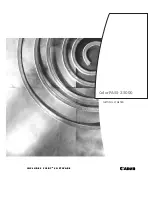
Chapter 3
Managing Disk Volumes
37
FIGURE 3-1
Graphical Representation of Disk Striping
Caution –
There is no data redundancy in an IS volume configuration. Thus, if a
single disk fails, the entire volume fails, and all data is lost. If an IS volume is
manually deleted, all data on the volume is lost.
IS volumes are likely to provide better performance than IM volumes or single disks.
Under certain workloads, particularly some write or mixed read-write workloads,
I/O operations complete faster because the I/O operations are being handled in a
round-robin fashion, with each sequential block being written to each member disk
in turn.
Integrated Mirror Volumes (RAID 1)
Disk mirroring (RAID 1) is a technique that uses data redundancy (two complete
copies of all data stored on two separate disks) to protect against loss of data due to
disk failure. One logical volume is duplicated on two separate disks.
FIGURE 3-2
Graphical Representation of Disk Mirroring
Whenever the operating system needs to write to a mirrored volume, both disks are
updated. The disks are maintained at all times with exactly the same information.
When the operating system needs to read from the mirrored volume, the OS reads
from whichever disk is more readily accessible at the moment, which can result in
enhanced performance for read operations.
















































